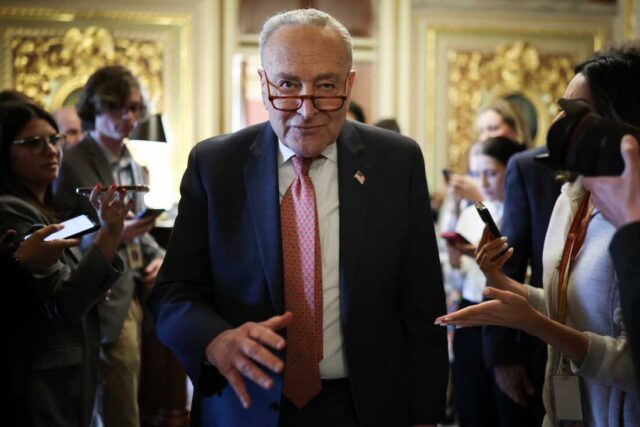
Senate Passes Republican-Led Spending Bill to Fund Government Through September
The U.S. Senate has approved a Republican-led spending bill aimed at funding the government through the end of the fiscal year in September. The measure passed with a 54-46 vote, receiving bipartisan support from two Democratic senators while one Republican, Senator Rand Paul, opposed it. The bill now moves to the House of Representatives for further deliberation.
Bipartisan Support and Procedural Vote
Before its final passage, the bill overcame a procedural vote with a 62-38 majority, surpassing the 60-vote filibuster threshold required in the Senate. This step necessitated support from several Democratic senators. Senate Minority Leader Chuck Schumer led a group of nine Democratic senators who broke ranks with their party to advance the measure. Schumer defended his decision, arguing that allowing a government shutdown would ultimately strengthen former President Donald Trump and DOGE (a possible reference to the Department of Government Expenditures or a political term related to spending policies).
Key Provisions of the Spending Bill
The spending bill includes significant changes to federal funding allocations:
- Military Spending Increase: The legislation provides a $6 billion increase in defense-related expenditures, a key priority for Republican lawmakers who emphasize national security and military readiness.
- Cuts to Non-Military Programs: The bill reduces non-military spending by $13 billion, a move that Democrats argue could negatively impact social programs, healthcare, and education initiatives.
- Funding Restrictions for Washington, D.C.: The bill blocks $1 billion in federal funds from being allocated to Washington, D.C., a measure that has sparked criticism from local officials and Democratic lawmakers who argue it undermines the city’s autonomy.
Political Reactions and Implications
Republican Perspective
Republican lawmakers have lauded the bill as a necessary step toward fiscal responsibility and national security enhancement. They argue that the spending cuts reflect a commitment to reducing government overreach while bolstering the military’s capabilities.
Democratic Concerns
Many Democrats have criticized the bill, warning that the reductions in non-defense spending could harm critical government programs and public services. However, the nine Democratic senators who supported the measure justified their stance as a pragmatic decision to prevent a government shutdown, which could disrupt federal operations and essential services.
Rand Paul’s Opposition
Despite being a Republican, Senator Rand Paul opposed the bill, citing concerns over excessive government spending. Paul, a longtime advocate for reduced federal expenditures, argued that even with the non-military spending cuts, the bill does not go far enough in curbing federal debt and deficit growth.
Next Steps
With Senate approval secured, the bill now moves to the House of Representatives, where it is expected to face further debate and potential amendments. If the House approves the measure, it will proceed to President Biden for final signing into law.
Conclusion
The passage of the GOP-led spending bill marks a significant moment in ongoing budget negotiations. While it successfully prevents a government shutdown, the bill’s emphasis on military funding and cuts to non-military programs has fueled debate across party lines. The final outcome will depend on House negotiations and potential adjustments before it reaches the President’s desk.



